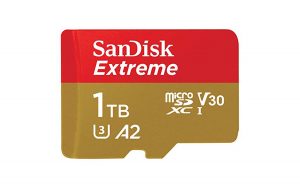SD (Secure Digital) is a flash memory card format used in digital cameras, mobile phones, and other electronic devices. It is an evolution of the MultiMediaCard (MMC) format, and includes several related technologies that can be adapted into the primary SD form factor:
- miniSD
- microSD
- SDXC
- SDIO
- SDUC
Of these, SDUC (Secure Digital Ultra Capacity) supports the largest capacities (up to 128 terabytes) and provides the fastest transfer speeds (up to 985 megabytes per second).
No data storage technology is perfect. SD cards can sustain damage due to high ambient temperatures, damaged controllers, or other physical issues — and as is the case with all data storage media, corruption can compromise data.
Data corruption essentially means that a file becomes unreadable because part of the binary code is missing or incorrect. It frequently occurs on removable media when the media is ejected from the computer during a write operation. While modern operating systems have safeguards to prevent external media corruption, there’s no perfect solution; if users can remove the device, corruption is possible.
Additionally, all non-volatile flash memory becomes less reliable over time. Data corruption can occur semi-randomly, particularly on older cards (though brand-new cards can also suffer data corruption).
Here are a few of the most common symptoms of data corruption on SD cards, along with tips for repairing corruption and recovering files.
Common Symptoms of a Corrupt SD Card
- Your computer recognizes the SD card, but does not show any files.
- When you try to open the SD card, you receive a message that reads “SD card is formatted. Do you want to format it now?” or something similar.
- The SD card appears to be full, even though it is not.
- Your computer displays an inaccurate capacity for the SD card (for example, a 16GB card reads as 1GB).
- You receive an error message that the SD card is “write protected.”
- Random files (such as photos) seem to be missing from the file directory.
- You receive an error message that specifically mentions corruption. For example: “The file or directory is corrupted and unreadable.”
While all of these symptoms can indicate corruption, they’re diagnostically important. If you’re pursuing data recovery for your SD card, write down any signs of data loss, including the full text of any error messages.
Potential Fixes for SD Card Corruption

SanDisk 1TB microSD card.
If you need the data from your SD card, we strongly recommend contacting a professional data recovery company as soon as you notice signs of corruption. Generally, you get one chance to recover data; performing any operations on your SD card could result in permanent data loss.
If you’ve already backed up the data on the SD card, you may be able to address file corruption by reformatting it. In Windows, right-click the SD card in File Explorer and choose “Format” to get started. This will wipe any data from the card, but may address filesystem corruption that prevents the card from being usable.
However, if corruption prevents your card from being readable, there’s a high chance that it will happen again — particularly if your SD card is hot to the touch or shows any signs of physical wear and tear.
Data Recovery Resources for SD/microSD/miniSD Media
Once again, for the best chances of a successful SD card data recovery, contact a professional provider. Data recovery engineers treat data corruption by searching for patterns within data that indicates corruption, then repairing the affected areas. Software can automate this process somewhat — but a trained engineer will have the best chance of restoring the target files to a usable state.
You can also try data recovery software on your own, but be aware that you’re taking a serious risk. To improve your chances of a successful result, make a clone of your SD card before running software and run the data recovery program on the clone (not on the original card). Read our guide to making a clone with ddrescue.
At Datarecovery.com, we’ve structured our services to give our clients complete peace of mind as their cases progress. With risk-free evaluations, guaranteed results, and the industry’s highest success rates across a wide range of media, we’re prepared to help you restore files from any SD device.
To learn more about our process or to schedule a risk-free evaluation, call us at 1-800-237-4200 or submit a case online.





